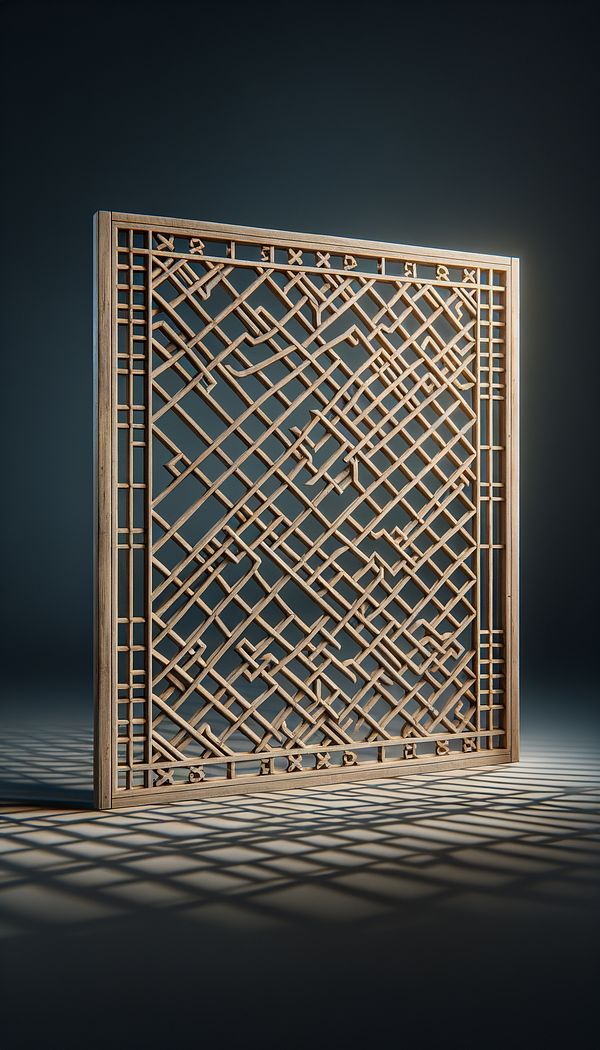What is Lattice?
Lattice is a framework consisting of a crisscrossed pattern of strips of material.
Description
In the realm of interior design, lattice refers to an ornamental or functional framework that exhibits a crisscrossed, openwork pattern. This framework is achieved by intersecting or overlaying strips of a material, which can be wood, metal, or plastic, to create a diamond or square-shaped mesh. Lattice is celebrated for its versatility, allowing light and air to pass through while providing decorative appeal or privacy.
Lattice can be incorporated into interior and exterior designs in various ways. It is frequently used in garden settings as trellises for climbing plants, creating natural green walls. Inside the home, lattice panels can serve as room dividers, adding a touch of elegance and an element of privacy to open spaces. Lattice designs can also be found in furniture, such as cabinet doors, where they add visual interest and texture. Beyond its aesthetic qualities, lattice work is lightweight yet offers structural rigidity, making it an excellent choice for a range of applications.
Moreover, lattice can embody various design styles, ranging from traditional to contemporary, depending on the material and pattern used. It has the ability to blend seamlessly with the surrounding decor or stand out as a focal point in garden designs, porches, and interior spaces. Lattice's openwork nature also means it can perform practical functions, such as supporting climbing plants or serving as a light, permeable barrier.
Usage
Lattice is commonly used in outdoor garden spaces as trellises for climbing plants, offering a visually appealing and natural barrier. Indoors, it finds application as room dividers or in cabinet doors, creating visual depth and interest. Its versatility extends to outdoor spaces where it can enhance privacy and aesthetics of porches and patios.
FAQs
-
Can lattice be used outdoors?
Yes, lattice is often used outdoors for garden trellises, privacy screens, and to add decorative touches to porches and patios.
-
Is lattice only made of wood?
No, lattice can be crafted from various materials, including wood, metal, and plastic, each offering different aesthetic and durability qualities.
-
Can lattice work be custom-made?
Yes, lattice can be custom-designed to fit specific spaces or to match unique design preferences, allowing for personalized patterns, sizes, and materials.
Practical Application
When incorporating lattice into your design, consider the scale of the pattern in relation to the space and how light and air flow will impact the overall ambiance. For outdoor use, selecting materials that can withstand the elements, such as vinyl or treated wood, will ensure longevity. For interior designs, lattice can be painted or stained to match or contrast with existing decor for added visual interest.
-
Architectural Elements199 articles
-
Design Styles478 articles
-
Decorative Techniques322 articles
-
Materials & Textiles360 articles
-
Outdoor & Garden14 articles
-
LinenLinen is a textile made from the fibers of the flax plant.
-
Bed-In-A-BagA bed-in-a-bag is a complete bedding set that includes every piece needed for a bed, all packaged together.
-
Counter StoolA counter stool is a tall, narrow chair designed for use at a kitchen counter or bar.
-
UnityUnity in interior design refers to the harmonious arrangement of elements within a space that creates a cohesive and coherent look.
-
Bird’s-EyeBird’s-Eye is a distinctive pattern found in maple wood.
